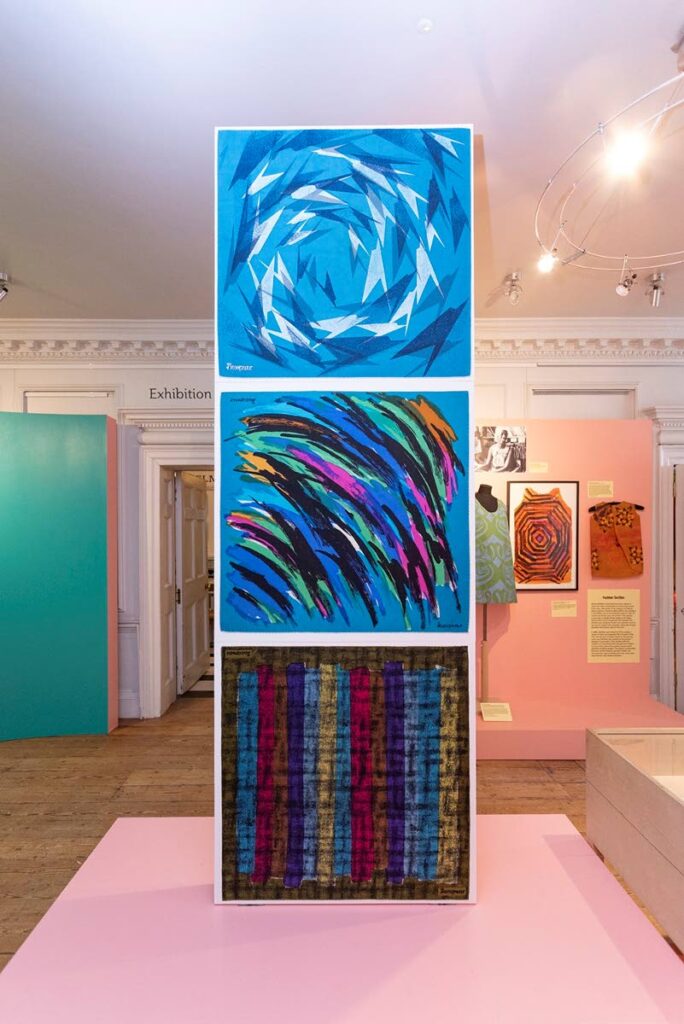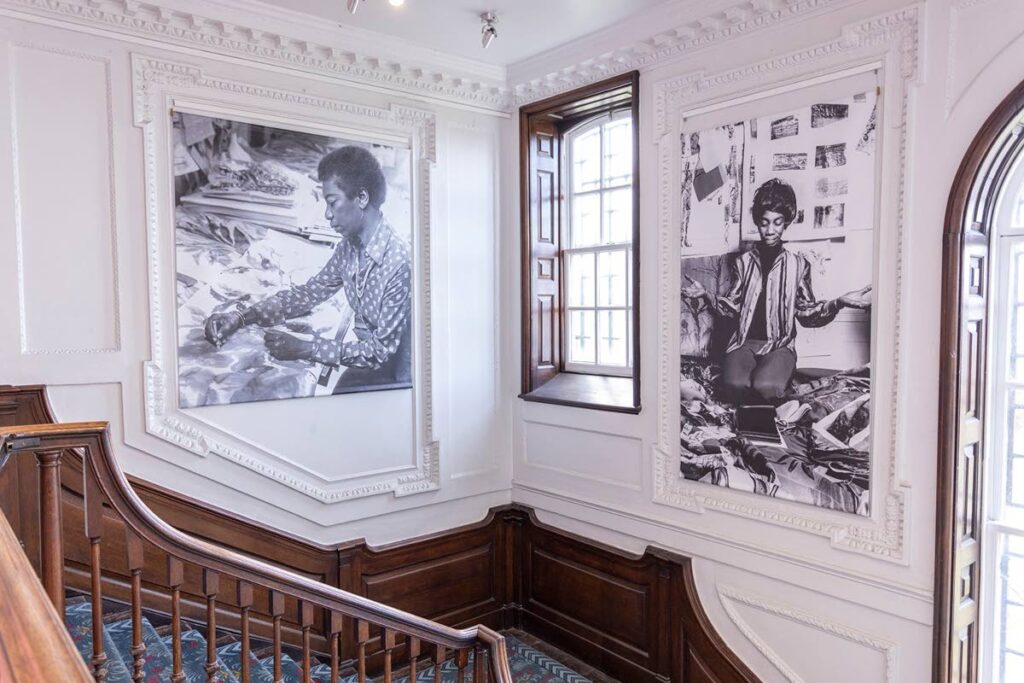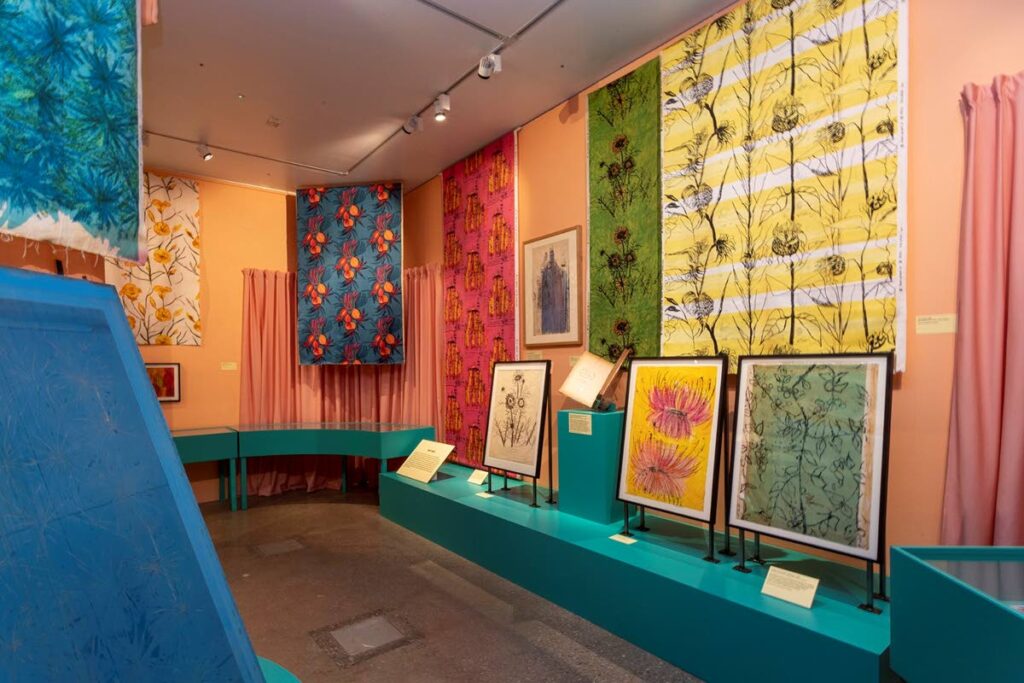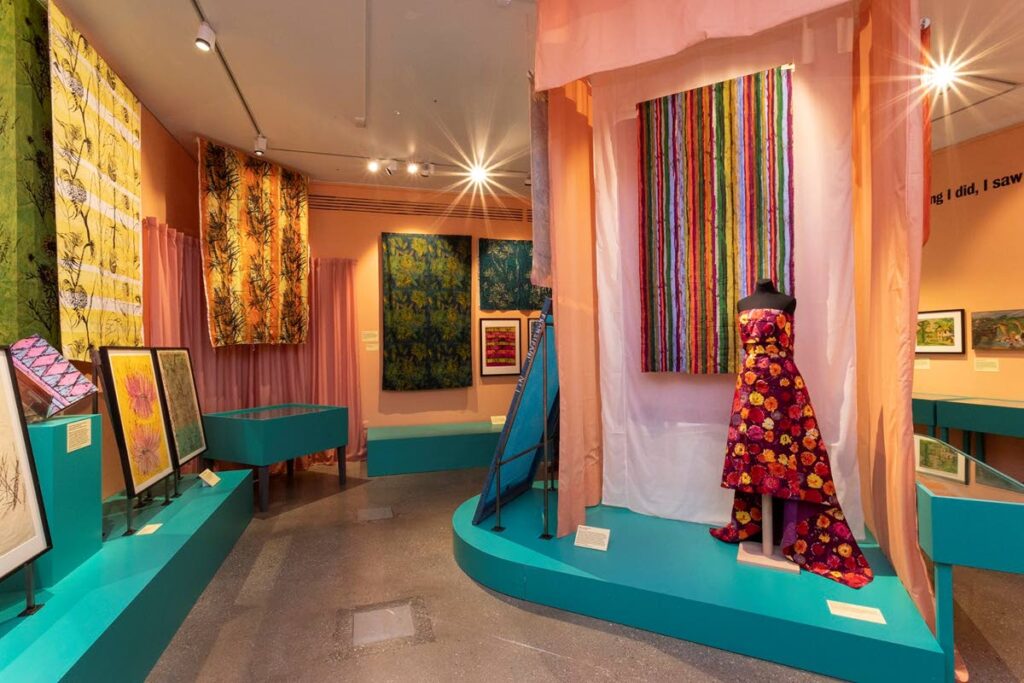Colour is Mine: London gallery holds gala show of Althea McNish designs

Ray Funk
Two years after her death, Trinidad’s acclaimed artist and textile designer Althea McNish (1924-2020) is being celebrated in a major exhibition, Colour is Mine, that opened on April 2 at the William Morris Gallery in London and will run until September 11.
The exhibition features hundreds of items, including dozens of her classic textile designs, as well as paintings, photos, magazine illustrations, murals and more. Many items from her personal archives are on public display for the first time.

The exhibition is sponsored by Liberty Fabrics, which has recently made 41 of her classic fabric designs available for sale, and they are glorious in their joyful celebration of McNish’s use of flowers and nature.
The gallery recently also offered a five-day workshop in textile design for teenagers in connection with the exhibition, encouraging the next generation of textile designers.
This has already been a banner year of celebration of McNish’s artistry. She had five works featured in the Life Between Islands exhibition of Caribbean art that recently closed at the Tate Britain, and had a classic interview with John LaRose republished in a new anthology, Liberation Begins in the Imagination: Writings on Caribbean-British Art.
For International Women’s Day in March, the London School of Fashion asked students and staff who had inspired them and one responded that it was Althea McNish: “Her designs are inspired by her love of nature (which I can totally identify with!). When I look at her prints, they bring me happiness because they are so bold, colourful, and joyful. They remind me of the brightest of summers days, when the sky is as blue as a cornflower and the sun is warm on my face!”

McNish was raised in Port of Spain and went to Bishop Anstey High School.
She reported in an interview, “I started painting and drawing very young.”
Her parents were very supportive, and she joined the Trinidad Art Society at an early age and soon found an equally supportive group of artists, including Carlisle Chang, Geoffrey and Boscoe Holder and MP Alladin, among others. Sybil Atteck was her mentor, who would pick her up and take her to painting sessions. She was participating in an Art Society exhibition by 16.
Indeed, it was through that exhibition that she got her first job, as a cartographer and entomological illustrator for a government office, after she left school. Even at a young age, she was asked by the local priest to teach art to students at the Boissiere Village school.
Her father was working in London and brought her there to further her studies in November 1950. McNish had a scholarship to study architecture, but decided this was not for her, and her focus changed. She started at the London School of Printing and Graphic Arts, then went to the Central School of Arts and Crafts, and finally did a postgraduate course at the Royal College of Art, where she focused on textiles, graduating in 1957.
Her work in the final student show led to her meeting with Arthur-Stewart Liberty. He brought her to the famous store the day after she graduated and had the heads of departments meet with her. Liberty bought almost her entire collection of work at the time, and this meeting would start her career as a freelance textile designer.
She was featured in Time Present, an exhibition of the latest designs, at Hamptons of Kensington only a year after graduating.

She would later produce key designs for many other great textile companies in London, producing both for fashion and furnishings. She was commissioned by Zika Ascher, where her fabric was used in dresses by Christian Dior.
In 1959, McNish’s design for Hull Traders would also become her most famous fabric, Golden Harvest, based on a trip to wheat fields in Essex that reminded her of walking through cane fields at home in Trinidad. It became a bestseller for Hull Traders for well over a decade, until the company closed in the late 1970s.
By 1960, Design magazine noted she had also designed book jackets, murals, panels and wallpaper. She designed murals for the British luxury ocean liner the SS Oriana, and later for Nordic Express cruise lines.
When the Port of Spain General Hospital was modernised in 1960, she designed murals for it. In 1966, for the Ideal Home show in London, she created a “Bachelor Girls” room and was featured on BBC television talking about it. The William Morris Gallery exhibition has created an updated equivalent.
McNish had her first solo art show in London in late 1958 and was part of a landmark exhibition, Paintings by Trinidad and Tobago Artists, in 1961 at the Commonwealth Institute. Her textile designs were featured in magazines like Vogue, which has just published a piece on the new show. In 1963, the Cotton Board gave her a scholarship to study in France.
Design magazine in 1968 ran a special issue on design for export that noted McNish “regularly visits Italy, Switzerland, France and Scandinavia and is regularly visited every year in her London studio by buyers from overseas manufacturers.”
She loved skiing, and was able to combine that interest as well. But a distinct part of her appeal was colour and floral patterns: as she said, “Everything I did, I saw through a tropical eye.”
Throughout her career, McNish was also noted for her focus on technical aspects of textile and print design. When a new polyester fabric, Terylene, was developed, she was commissioned in 1964 to work with the manufacturers for designs for it.
Over the years, her work was featured in many exhibitions, even one in the waiting halls of the House of Commons, and discussed in several academic books. She taught design in colleges in the UK, gave lecture tours in the US and was featured in the recent documentary film, Whoever Heard of a Black Artist? Britain's Hidden Art History.
McNish was active in London’s Caribbean community. She was one of the judges for the beauty queen contest at the 1962 Claudia Jones Carnival and was later involved with the Notting Hill Carnival as a judge. She was also an active participant in the Caribbean Arts Movement led by John La Rose, appearing in three exhibitions and a symposium of visual artists, and in 1973 designed the set and appeared on an episode on artists for the BBC TV series Full House as part of this work.
She returned regularly to Trinidad and had a love for Carnival. She was given a special three-month “return home” scholarship in the summer of 1962, when she had a large show of her work at the Government Training College and taught courses.
In 1976 she received the Chaconia Gold medal. The University of Trinidad and Tobago awarded her an honorary doctorate of fine arts in 2006.
In 2016 McNish and her husband John Weiss came to Trinidad and gave a presentation at the UTT Caribbean Academy of Fashion and Design on her work. They also participated at the bicentennial celebration of the Merikin community of south Trinidad, of which McNish’s family was a part.
When she met co-curator of this exhibit Rose Sinclair in 2017, McNish told her, “I opened the doors for others to follow.”
Sinclair is delighted that this exhibition has finally opened and hopes for it to tour. She is continuing a three-year grant-funded research project on McNish, and is working towards compiling a biographical history of her and her work
Althea McNish was an activist – but in her own shy way. When asked the key to her success in an interview, she laughed and said it was her charm. Indeed, she is widely remembered for calmly always moving forward and not being concerned that she was doing something new.
Now this expansive new exhibition finally does justice to her long career and helps celebrate an amazing Trinidadian artist and designer, whom Architectural Digest declared one of “Five Female Designers Who Changed History.”


Comments
"Colour is Mine: London gallery holds gala show of Althea McNish designs"